Nepal has come a long way since it opened its doors to the first group of tourists in 1965. Since then, the country has welcomed millions of tourists, and Nepal has seen rapid growth and development in the tourism sector. The government has been in favor of tourist-friendly policies, which have also helped boost tourism in the country. So It's no wonder that Tourist Places in Nepal have become a bucket-list item for travelers from around the globe.
Unlike other Himalayan nations, the Nepalese government has opened up most of its mountains and trekking trails to tourists. There are very few travel restrictions in place, and one can easily explore the length and breadth of the country. As of 2025, this tiny Himalayan nation is hailed as one of the best destinations for trekking and mountaineering. Home to eight of the 14 highest mountains in the world, Nepal is a playground for adventure seekers and intrepid travelers. Its diverse terrain and pristine landscape continue to capture the hearts of those who travel to this beautiful land.
From the arid arctic deserts in the high mountains to the lush tropical forests in the lowlands of the south, Nepal offers a diverse topography. The country is also home to ten UNESCO World Heritage Sites. Its 12 national parks, 6 conservation areas, and 1 wildlife reserve protect the country's rich wildlife and flora. With 126 ethnic groups living within this country, the cultural map of Nepal is as colorful and diverse as its physical landscape.
Are you up for a tourist places in Nepal? We have compiled a list of 20 popular destinations in Nepal detailing the most popular visted areas for you to choose from.
Whether you wish to delve into Nepal's rich culture and history or choose an adrenaline-pumping adventure, this small Himalayan nation will not disappoint you. There's so much to do and see in the country that a single visit is not enough. If you are planning a trip to Nepal but are confused as to where exactly you should head, you may find this blog useful. Here we have compiled a list of the 'Top 20 Tourist Destinations in Nepal'. We have also included answers to some of the most frequently asked questions about Nepal. Since this is a lengthy write-up, we suggest you take time out and curl up in your favorite spot, maybe with a steaming cup of tea or coffee, and read on.
Check out the best popular places of Nepal for 2025/26
List of Top Tourist Attractions in Nepal
Kathmandu
Location: lower Himalayas of central Nepal, Height: Approximately 1,400 meters (4,600 feet), Highlight: Wander Kathmandu’s winding alleys, where prayer flags flutter above tea shops and old temples breathe history.
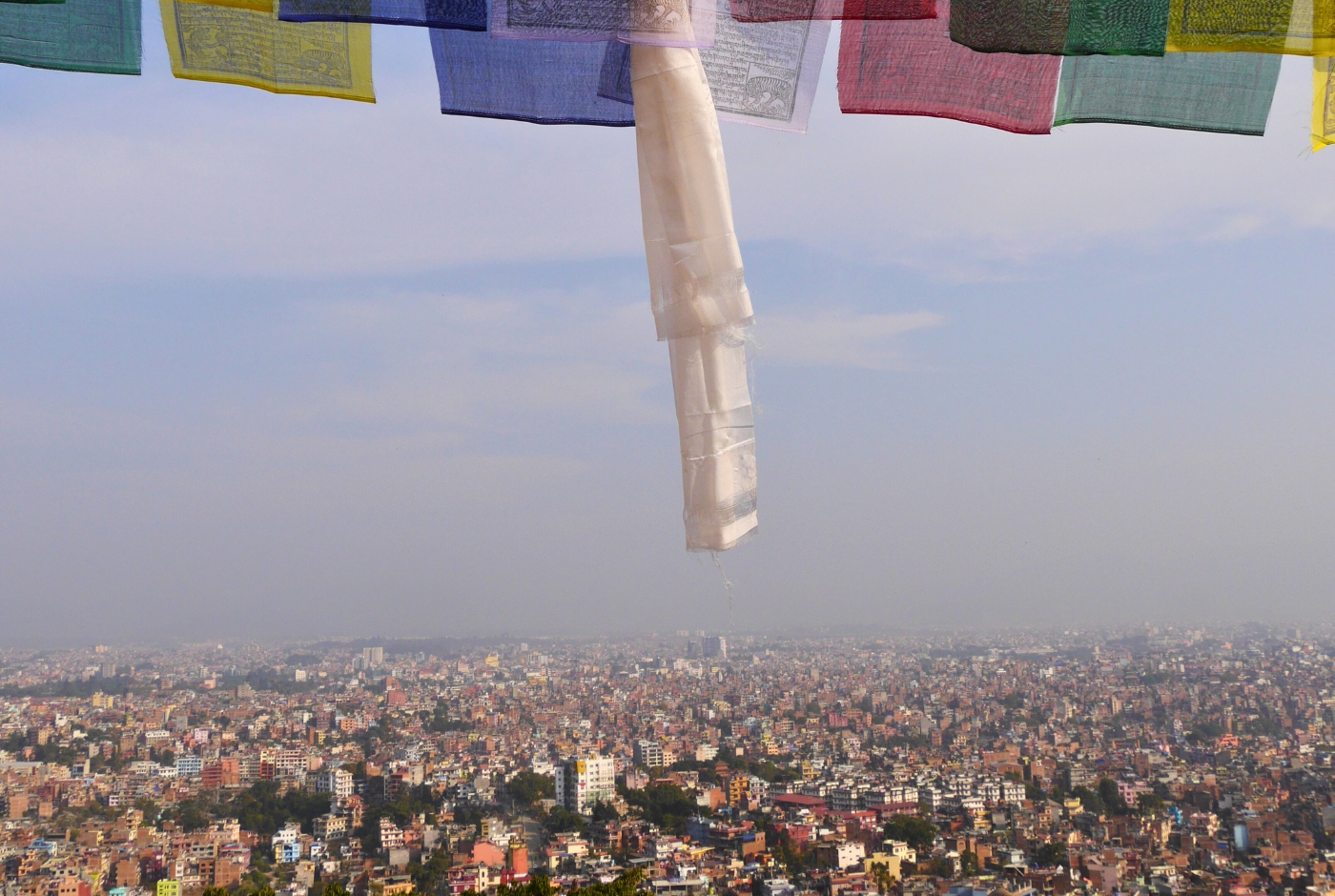
Kathmandu is a prominent tourist destination in Nepal due to its rich cultural heritage, including numerous temples, monasteries, and historical sites, some of which are UNESCO World Heritage Sites. The city also serves as a gateway to the Himalayan region and offers a diverse range of experiences, from religious pilgrimage to adventure tourism.
Kathmandu, the vibrant capital of Nepal, is more than 2000 years old. It is a historic city with seven UNESCO World Heritage Sites and many ancient religious and cultural sites. The city, which lies in a fertile valley surrounded by green hills, has been an important destination for pilgrims and intrepid travelers since time immemorial. It was the seat of the Malla kings, who ruled over the valley and built most of the iconic structures that people identify with Nepal.
In the 21st century, Kathmandu has transformed into an urban hub, with modern buildings covering its skyline and cutting-edge technology improving the lives of its people. Home to the Newars, an indigenous ethnic community, Kathmandu is a cultural, spiritual, and historical destination. Some of the must-visit attractions in Kathmandu are:
Swayambhunath, or Monkey Temple
Location: Western hills of Kathmandu, Nepal, Height: Approximately 2,100 meters, Highlight: Climb the 365 steps to Swayambhunath’s stupa and gaze over Kathmandu as prayer wheels spin and monkeys guard centuries-old shrin
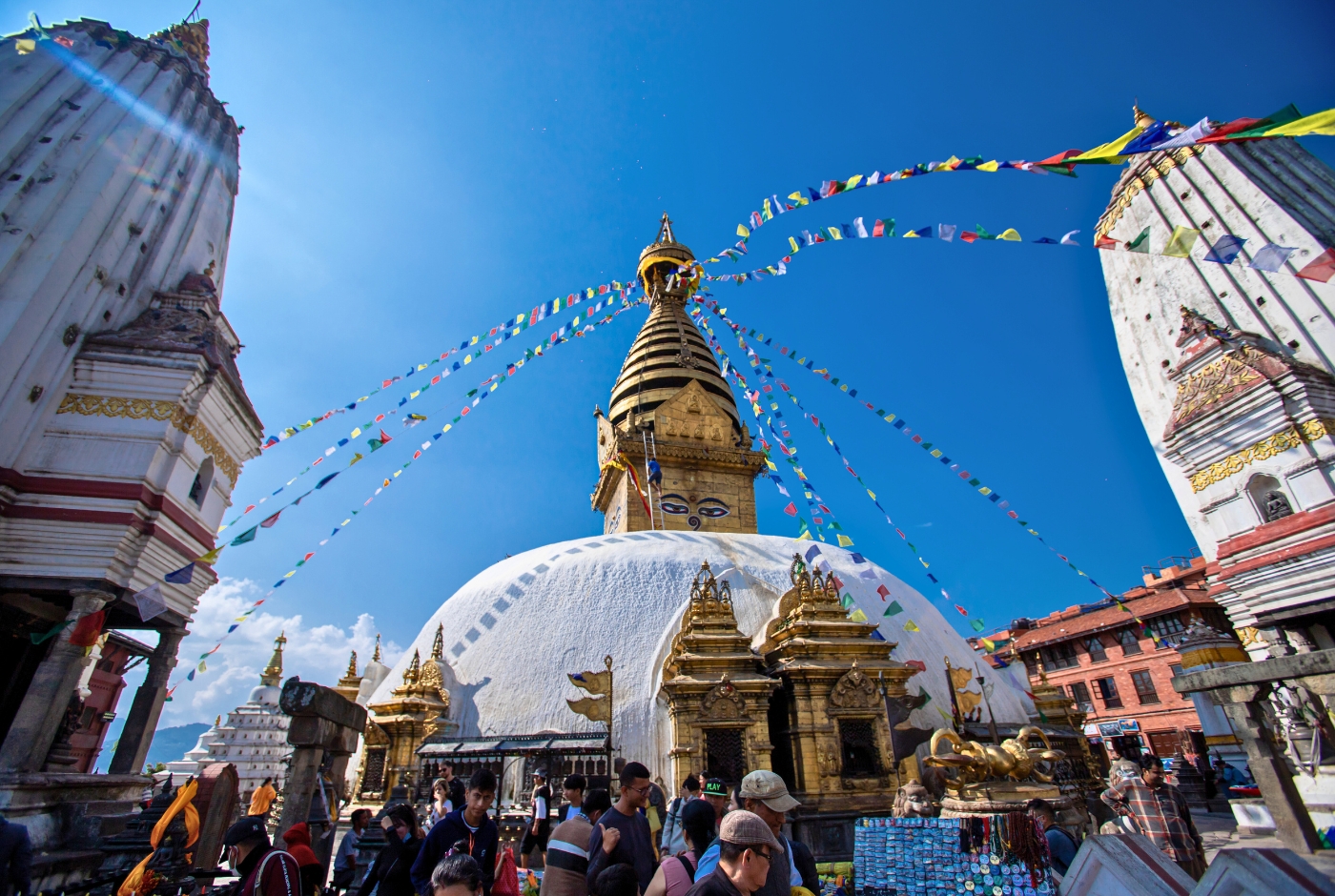
Locals believe that Kathmandu was once a giant lake. The city was formed after a Boddhisattva named Manjushri drained the lake to get to a radiant lotus, which he saw while meditating. The lotus took the form of a white stupa, which is why the temple is known as 'Swayambhu,' or 'self-created'.
Located on top of a hill overlooking the city, Swayambhunath is a beautiful temple. The white domed stupa has a square, four-sided tower with a tapering gilded turret. The four sides of the tower are painted with the eyes of the Buddha.
Pashupatinath Temple
Location: Eastern banks of the Bagmati River, Kathmandu, Elevation: Around 1,340 meters (4,400 feet), Highlight: Step into Nepal’s most sacred Hindu temple, where flickering butter lamps, riverside cremation rites, and the quiet presence of sadhus create a powerful sense of devotion and timelessness.
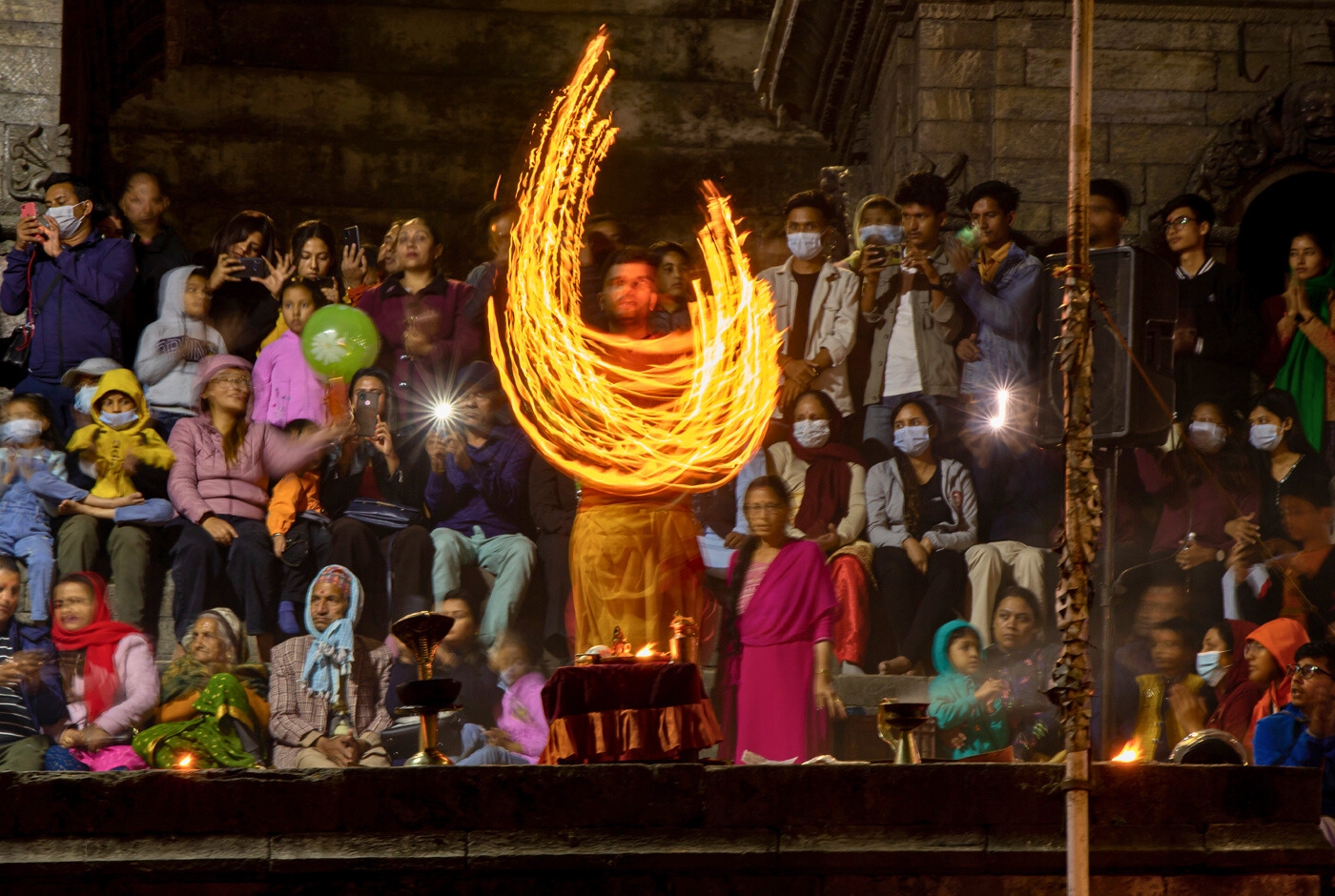
This is one of the holiest shrines dedicated to Lord Shiva. This pagoda-roofed temple has existed since 400 AD, and devout Hindus make it a point to visit this temple at least once in their lifetime. The Pashupatinath Temple complex covers a very large area, and one can find other shrines within the complex besides the main temple. Arya Ghat, the Hindu cremation site, lies just below the temple, beside the sacred Bagmati River.
The Three Durbar Squares
Location: Heart of Old Kathmandu, Nepal, Elevation: Approximately 1,350 meters, Highlight: Walk through a living museum of palaces, courtyards, and carved wooden temples—where the echoes of royal ceremonies blend with the rhythm of everyday life
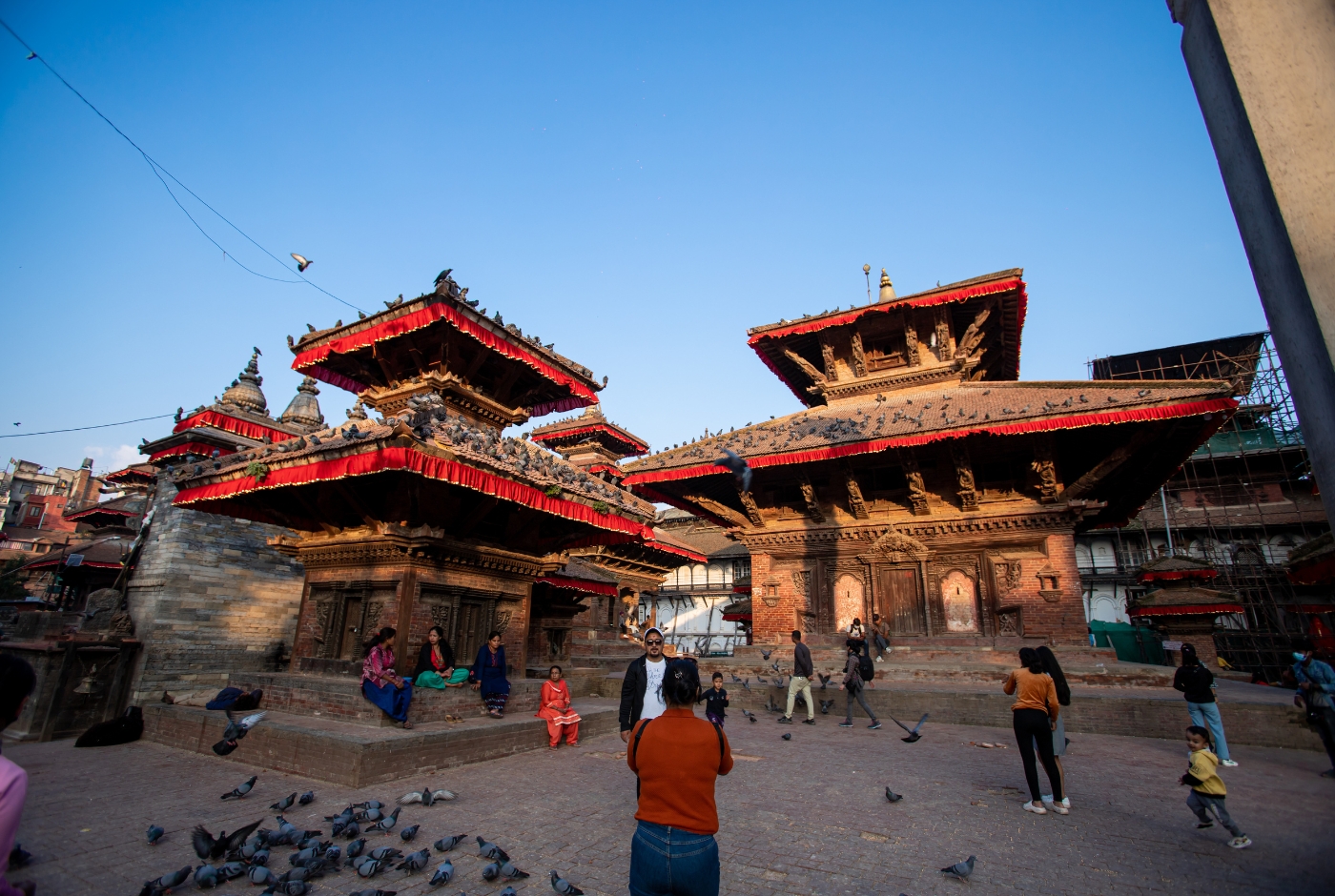
Kathmandu is home to the three medieval royal squares (Basantapur Durbar Square, Patan Durbar Square, and Bhaktapur Durbar Square) built by the Malla kings. Kathmandu Valley is made up of three medieval kingdoms- Kathmandu, Patan, and Bhaktapur. These kingdoms were ruled by different kings in bygone days. The Durbar squares of these cities used to be the power centers and the residences of the royal families. The three kingdoms were unified after the Gorkha king Prithvi Narayan Shah conquered the valley in the eighteenth century.
The Durbar squares are filled with ornately carved stone and wooden temples and pagoda-roofed palaces. Bronze and stone sculptures of the kings and mythical creatures decorate the wide palazzos. Finely crafted windows, arches, and pillars adorn the buildings. These fine works of art are testimony to the artistic sophistication and expertise of the valley's craftsmen. The royal palaces have been converted into museums where royal artifacts and historical items are showcased.
Boudhanath Stupa
Location: Northeastern Kathmandu, on the ancient trade route to Tibet. Highlight: Circumambulate one of the world’s largest stupas as incense drifts through the air, prayer wheels spin under countless hands, and the all-seeing eyes of the Buddha watch over the sacred circle of devotion.
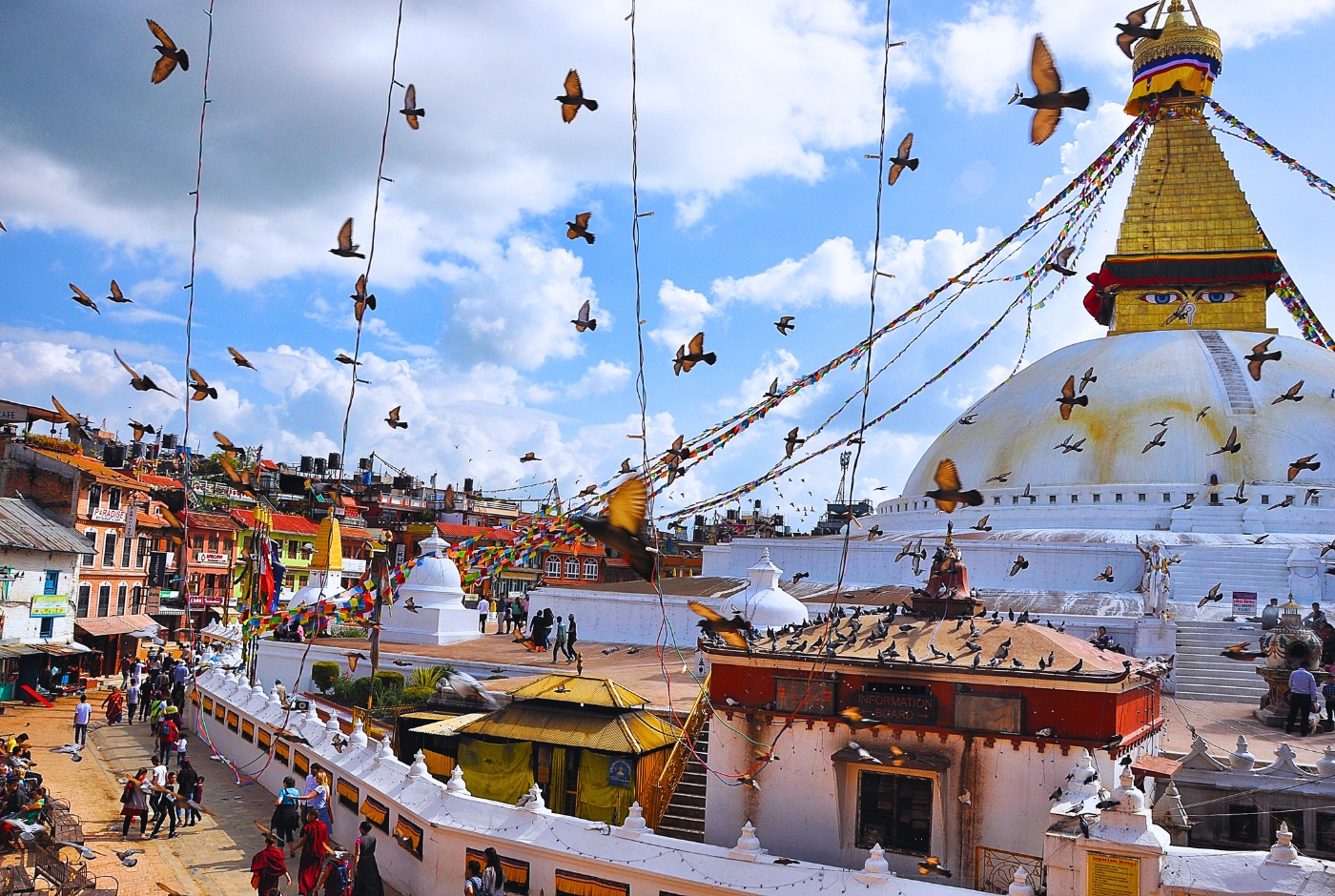
The Boudhanath Stupa is the largest Buddhist stupa in Nepal and South Asia. Dating back to the fifth century, this mammoth white stupa is one of the most important Buddhist pilgrimage sites in the country. The white dome of the stupa sits on an elevated stone plinth built in the shape of a 'mandala'. The dome is topped by a golden spire, with the four sides decorated with the eyes of the Buddha. Boudhanath Stupa is surrounded by a monastery, souvenir shops, restaurants, and cafes. It's an important center of Tibetan Buddhism, and a large Tibetan colony exists in its vicinity.
Changunarayan Temple
Changunarayan Temple is the oldest Hindu temple in the valley. Located on a densely forested hill, the temple is dedicated to Lord Vishnu. One can find carvings and statues of the ten avatars of Lord Vishnu inside the temple. Inside the temple’s courtyard is the oldest written inscription found in Nepal.
Besides the seven UNESCO World Heritage Sites, Kathmandu has a lot of interesting religious and natural sites that are worth visiting. The Newari villages of Khokana, Bungamati, and Panauti are heritage sites and living museums. The hills surrounding the valley—Shivapuri, Champa Devi, Pulchowki, Chisapani, Sundarijal, Jamachho, and Nagarjuna—are great destinations for nature hikes and mountain biking.
Pokhara
Location: Gandaki Province, Central Nepal, Height: 822 meters (2,697 feet), Highlight: Morning mist lifts off Phewa Lake as the Annapurnas glow—Pokhara feels like a quiet dream you never want to leave.
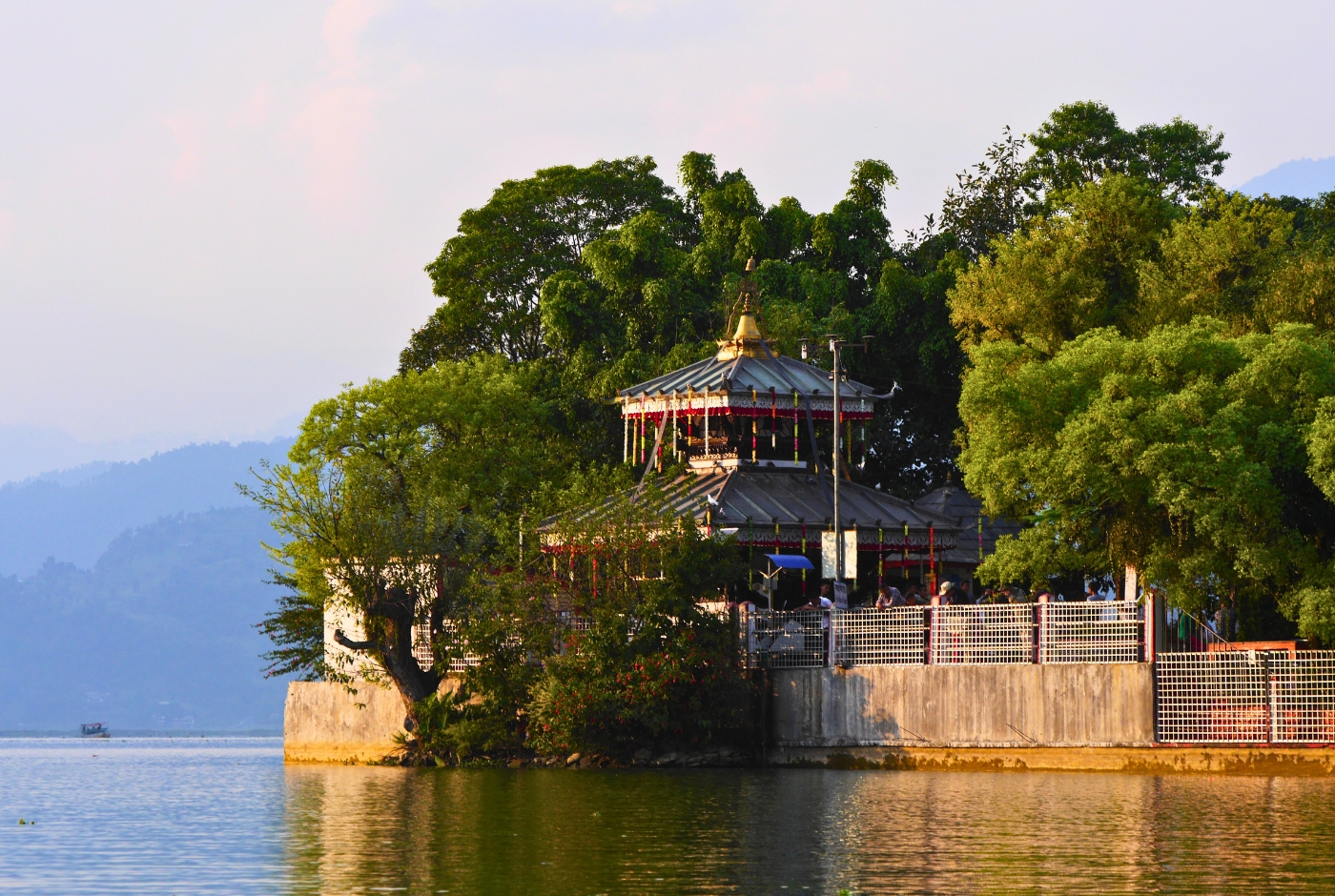
Pokhara is one of the most visited destinations in Nepal. Located on the side of the tranquil Phewa Lake, Pokhara offers splendid views of the Himalayan mountains and beautiful nature. Less polluted and less crowded than Kathmandu, many visitors prefer the chill and peaceful vibe of the lakeside city. The lakeside in Pokhara is the 'go-to' place for most tourists. It's where the pubs, cafes, restaurants, and hotels are located.
Some of the natural wonders of Pokhara include Davis Falls, Gupteshwar Cave, and the Seti Gorge. Sarangkot and Peace Stupa offer panoramic views of the city, Phewa Lake, and the Annapurna massif. Boating in the beautiful Phewa Lake with the forked summit of Machhapuchre towering above is a once-in-a-lifetime experience.
Pokhara also offers a range of adventure activities - bungee jumping, paragliding, zip lining, rafting, ultra-light flight, skydiving, and day hiking. Pokhara offers a unique blend of natural beauty, adventure, and cultural experiences, making it a truly unforgettable destination for travelers.
Lumbini
Location: Rupandehi district of Nepal, Height: 150 meters (492 feet), Highlight: Stillness lingers in the air—Lumbini invites you to slow down, breathe deep, and listen within.
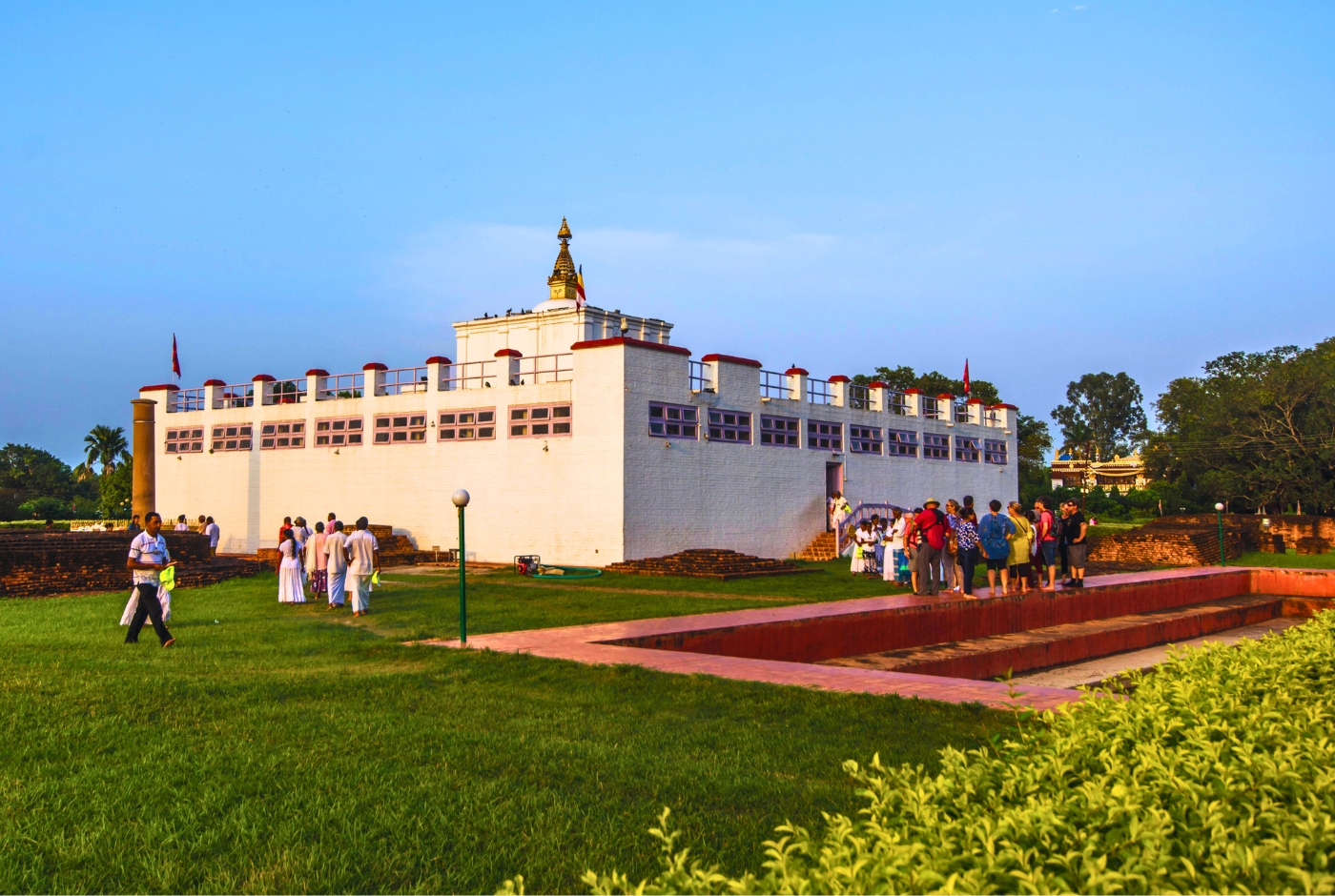
Located in the Terai plains of southern Nepal, Lumbini is the birthplace of Lord Buddha. The sprawling UNESCO World Heritage Site in Lumbini encompasses the Maya Devi Temple (where Queen Maya Devi gave birth to Prince Siddharth, who later went on to become Sakyamuni Buddha), the Puskarini Pond (where Lord Buddha received his first ritual bath), the Sacred Garden, the Ashoka Pillar, and monasteries built by Buddhist countries in their traditional architectural style.
A few kilometers from the World Heritage Site are the ruins of the former Sakya Palace, where Lord Buddha grew up. Devdaha, the maternal home of Queen Maya Devi, also lies close to Lumbini. The nearest airport is the Gautam Buddha International Airport in Bhairahwa. Lumbini can also be accessed via the Siddhartha Highway.
Janakpur
Janakpur is believed to be the maternal home of Sita, the wife of Lord Rama. The Hindu epic Ramayana recounts the story of Lord Rama’s coronation, exile, and the legendary battle with Ravana, the king of Lanka. Located in the Terai region close to India, Janakpur is dotted with several sacred Hindu pilgrimage sites. The prime attraction of this small town is the grand Janaki Mandir (temple), which was built in the year 1910. Covering an area of 1480 square meters, the temple is built of stone and white marble.
Janakpur also has the only railway network service in Nepal. The train connects Jayanagr with Janakpur and Kurtha.
Tansen, Palpa
The historic town of Tansen in Palpa District was once a Magar kingdom. Located in the hills of the Mahabharat Range, Tansen is a popular hill station. It is also the place where the national textile 'dhaka' and the traditional brass water jug (karuwa) are manufactured. Lined with the traditional houses of Newari merchants who migrated from Kathmandu Valley in the eighteenth century, Tansen has an old-world vibe. The most visited places in Tansen are the Rani Mahal Palace (known as Nepal's Taj Mahal), Palpa Durbar, Shreenagar Hill, and Bhiaravnath Temple.
Bandipur
Bandipur is a picturesque town located between Pokhara and Kathmandu. It is a popular weekend getaway filled with old brick houses built by Newari settlers in the nineteenth century. The town used to be a popular stop for merchants and traders traveling on the old Tibet Salt Trade Route. The Newar merchants from Kathmandu Valley came and settled here when the town was a popular trading hub. Now, the caravans of merchants have been replaced by the flow of domestic as well as foreign tourists.
Bandipur, like Tansen, has an old-world ambiance. With no vehicles allowed inside the main town, the atmosphere of the town is peaceful and calm at all times. It is a great place to chill out after an exhausting trek. You can walk down the cobbled street and explore the town. Sidha Cave and Thani Mai Temple are Bandipur's major attractions.
Chitwan National Park
Location: South Central Nepal, Height: Around 100 meters (330 feet). Highlight: Elephants tread softly through tall grass as the jungle stirs—Chitwan whispers of wild hearts and untamed beauty.
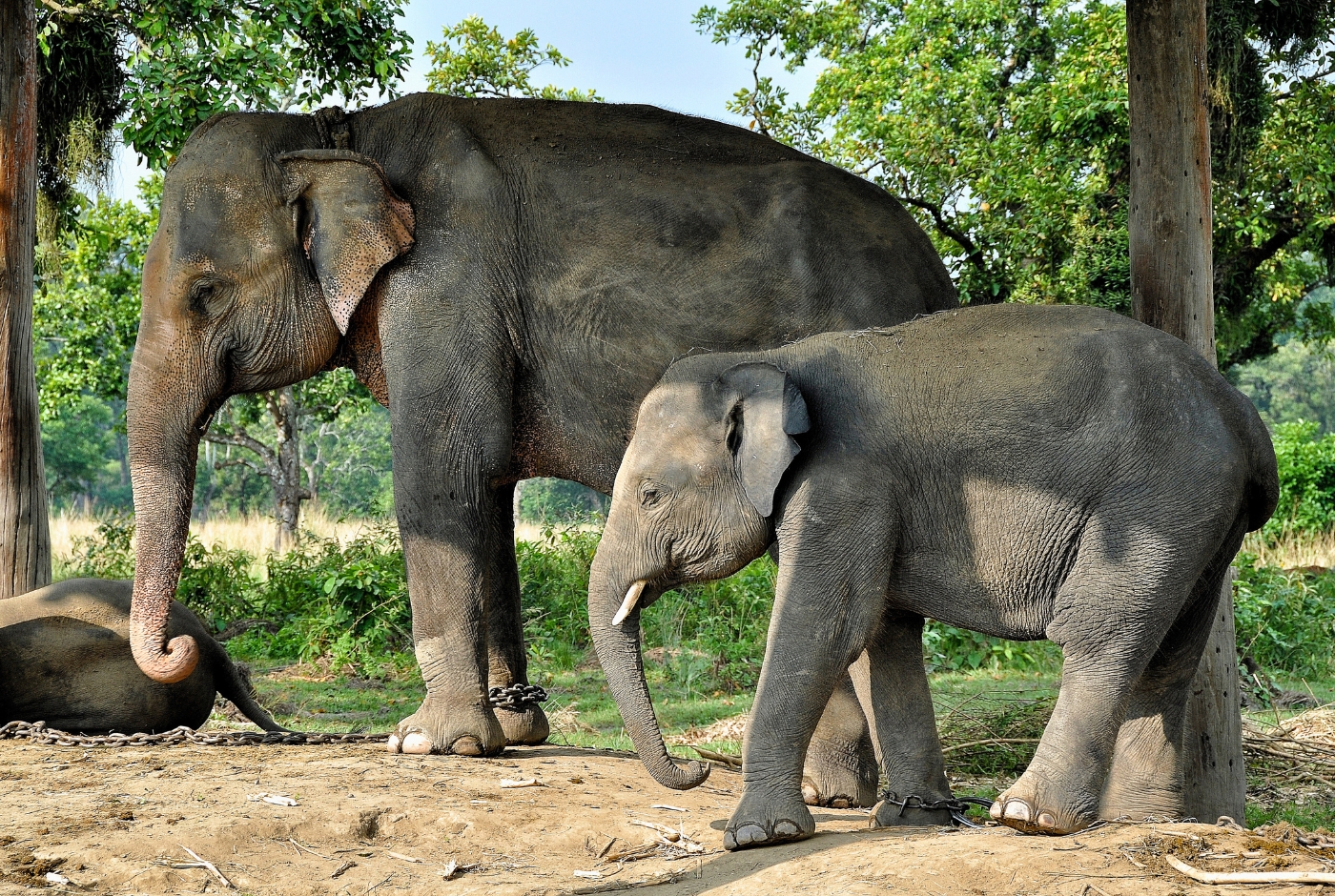
If you are a wildlife enthusiast, you shouldn't miss out on the Chitwan wildlife experience. Chitwan National Park is the first national park in Nepal and a UNESCO World Heritage Site. Known as the 'heart of the jungle', Chitwan is covered by lush tropical forests and lies below the Mahabharat Range. The park is one of the last surviving habitats of the Royal Bengal Tiger and the one-horned rhino. Apart from these two endangered mammal species, Chitwan National Park is home to 55 amphibians and reptiles, 525 species of birds, and more than 50 species of mammals. The park area is covered with Sal forests and 50 different types of grasses, including the tall elephant grass.
A tour of Chitwan National Park will take you deep into the forest, where rhinos, tigers, deer, and other animals roam freely. You can enjoy an elephant ride, a jeep safari, and a canoe ride inside the park. You can also visit the Elephant Breeding Center and Tharu villages during your tour.
Bardiya National Park
Located in far-west Nepal, a tour of Bardiya National Park gives you an authentic wildlife experience. The remote location of the park makes it one of the least visited destinations in Nepal. Bardiya National Park is an excellent spot for tiger and leopard sightings. The park is home to a large population of endangered Royal Bengal tigers and wild elephants. Nepal has been a frontrunner in tiger conservation, and the country has more than doubled its tiger population in the last decade. Bardiya National Park is one of the few habitats of the Royal Bengal Tiger where its population has seen exponential growth.
While not as developed as Chitwan National Park, Bardiya offers a unique and authentic jungle experience. The traditional Tharu villages surrounding the park area give an insight into the tribal way of life. River rafting, jungle safaris, and village tours are some of the activities you can indulge in while in Bardiya.
Koshi Tappu Wildlife Reserve
The only wildlife reserve in eastern Nepal, Koshi Tappu Wildlife Reserve, is the roosting hub for more than 400 species of migratory birds. This picturesque wildlife reserve is located close to the mighty Saptakoshi River and has a lot of marshland and dense forests. Koshi Tappu is home to wild elephants, gharials, Gangetic dolphins, and the only surviving population of wild water buffaloes (Arnas). The Koshi Tappu Wildlife Reserve is a haven for bird lovers, as one can spot some of the nearly extinct species of birds at this reserve. Bird watching, river rafting, jungle safaris, and jungle walks are some of the activities you can enjoy at the park.
Khaptad National Park
Located in the remote, far-west region of Nepal, Khaptad National Park is a hidden gem. Surrounded by grassy meadows, green hills, and mirror-like lakes, the natural beauty of Khaptad is beyond compare. Unlike most parks in the country, which lie in humid tropical jungles, Khaptad is situated in the mid-mountainous zone.
The park is covered with spruce, fir, pine, and oak trees. The grassy meadows inside the park are carpeted with more than a hundred varieties of wildflowers during the spring and summer. Khaptad is home to different species of birds, animals, and butterflies. It is also a rich storehouse of medicinal herbs found only in the Himalayas.
If you wish to explore a destination way off the popular tourist routes, Khaptad National Park is where you should head to. Trekking, bird watching, and short nature tours are some of the activities offered inside the park. There are also some sacred Hindu shrines and meditation spots inside the park.
Illam
Ilam is the tea capital of Nepal. Located in eastern Nepal, close to the Indian hill station of Darjeeling, Ilam has the largest number of tea estates in Nepal. The gently rolling hills of the district are covered with verdant tea gardens. One can enjoy a homestay with a local family and find out how tea is manufactured by taking a tour of one of the tea estates. Home to the Rai ethnic community, Ilam offers an amazing nature as well as a cultural experience.
Attractions in Illam include the Mai Pokhari, Shree Antu Danda, Pathivaramai Temple, and the pristine forests of Sanketham and Choyetar. The popular viewpoint of Sandakpu also lies close to Illam. Sandakpu is accessible by road, and one can easily find public transportation (shared jeep or taxi) heading to this picturesque viewpoint. Sandakpu, which lies at an elevation of 3636 meters above sea level, offers stellar views of Kanchenjunga, Mount Everest, Lhotse, the Khumbakarna Range, and Makalu.
Everest Region
Location: Northeastern Nepal (Khumbu Valley), Height: Ranges from 2,800 meters (Lukla) to 8,848.86 meters (Everest summit) Highlight: In the shadow of giants, the Khumbu trails carry you through clouds, prayer stones, and a silence that stirs the soul.
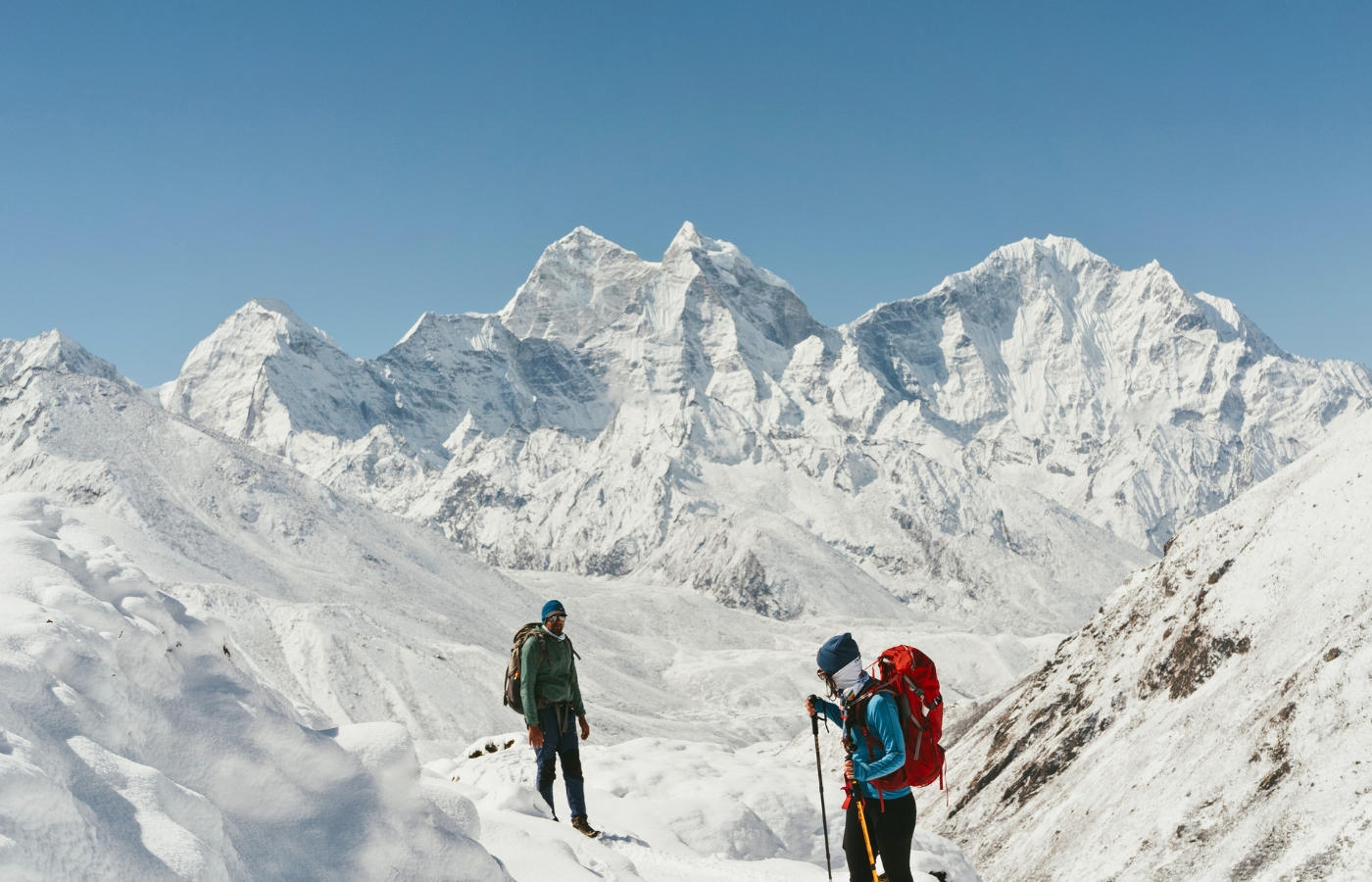
Everest Region is one of the top trekking and mountaineering destinations in the world. Home to Mount Everest, the world's tallest mountain, the Everest or Solu Khumbu Region encompasses some of the most popular hiking trails in our planet. A bulk of the tourists visiting Nepal annually head to Everest Base Camp. Located at the base of Mount Everest, the Everest Base Camp trail is on the bucket list of all adventure enthusiasts.
Time and again, the EBC Trek is voted as one of the World's Best Hikes by travel and adventure channels and journals for its mind-blowing landscape and unique culture. The multi-day trek takes you from Lukla or Salleri to the foot of the world's tallest mountain. En route, you cross quaint Sherpa villages, thundering rivers, pine and rhododendron forests, and glaciers.
Mount Everest becomes a hub of activity during the climbing season as mountaineers from different parts of the globe congregate to conquer the world's highest mountain. The Everest Region also has many 7000 and 6000-meter peaks that are ideal for climbing. The most popular climbing peaks are Island Peak, Mera Peak, Lobuche, and Ama Dablam.
Annapurna Region
Location: North-central Nepal, Nepal, Height: Ranges from 790 meters (Besisahar) to 8,091 meters (Annapurna I), Highlight: Terraced hills, roaring rivers, and snow peaks watching from above—the Annapurna trails feel like a journey home to nature.
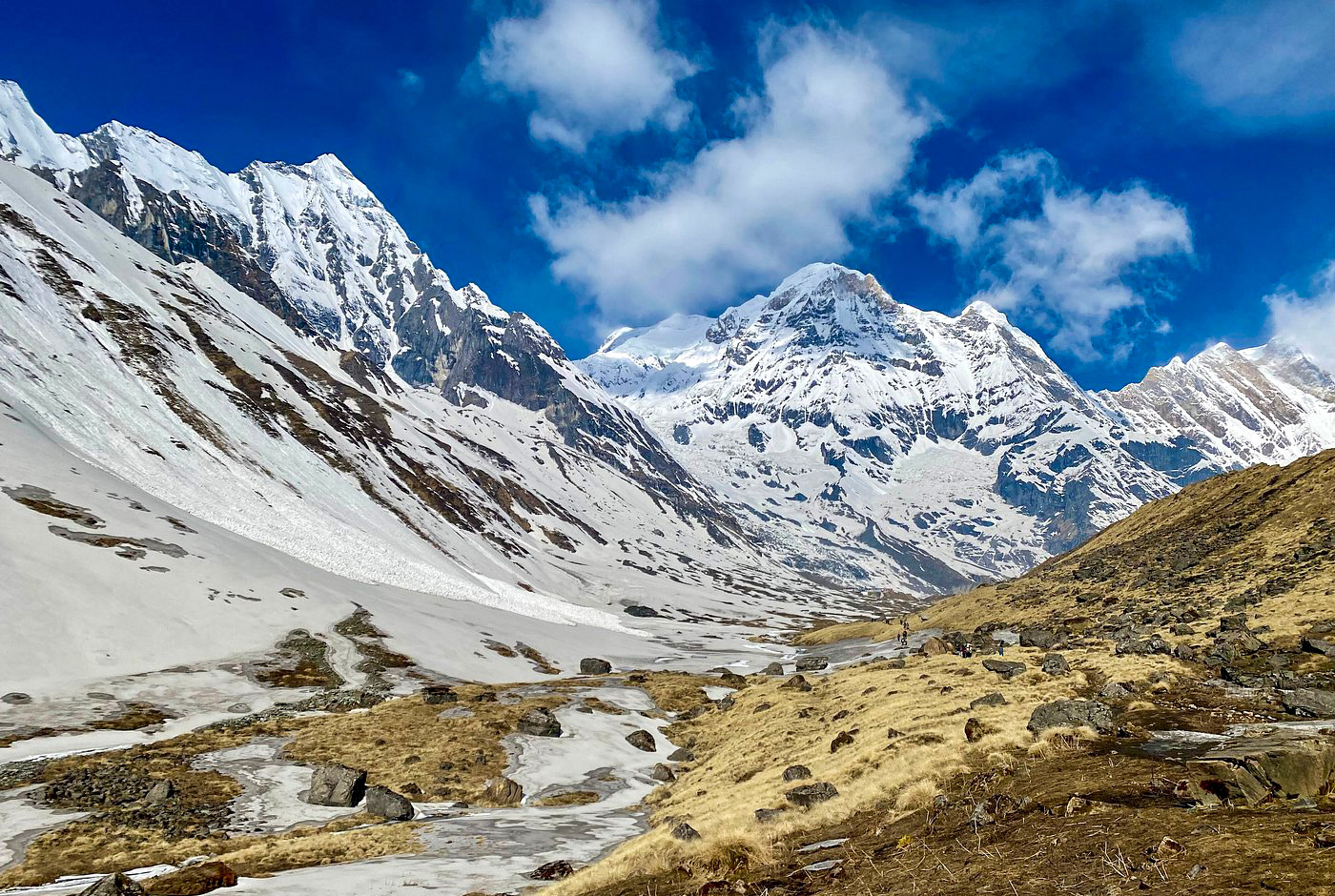
Annapurna Region is one of the most beautiful Himalayan trekking destinations. The foothills of the Annapurna Massif, which stretches over central and mid-western Nepal, are dotted with short as well as long hiking trails. These trails weave past picturesque Gurung and Magar villages, terraced fields, and rhododendron forests. Most of the tough Gurkha soldiers enlisted in the British Army come from the mountain villages of this region.
The Annapurna Circuit Trek, the Annapurna Base Camp Trek, and the Ghorepani Poon Hill Trek are the most popular treks in this region. One can enjoy impressive views of Annapurna South, Gangapurna, Hiunchuli, Manaslu, Dhaulagiri, and Annapurna I, II, III, and IV from these trails.
This region is favored by trekkers, as it offers hikes for people of all ages and experience levels. From experienced trekkers to novice hikers, there's a trail for everyone to walk on in the Annapurna Region. If you want to experience a typical Nepali landscape, you should walk on the Annapurna Trails.
Langtang Region
Location: Northern Nepal, Height: Ranges from 1,400 meters (Syabrubesi) to 7,234 meters (Langtang Lirung), Highlight: Where glaciers meet blooming rhododendrons, Langtang offers raw beauty and quiet trails that feel deeply personal.
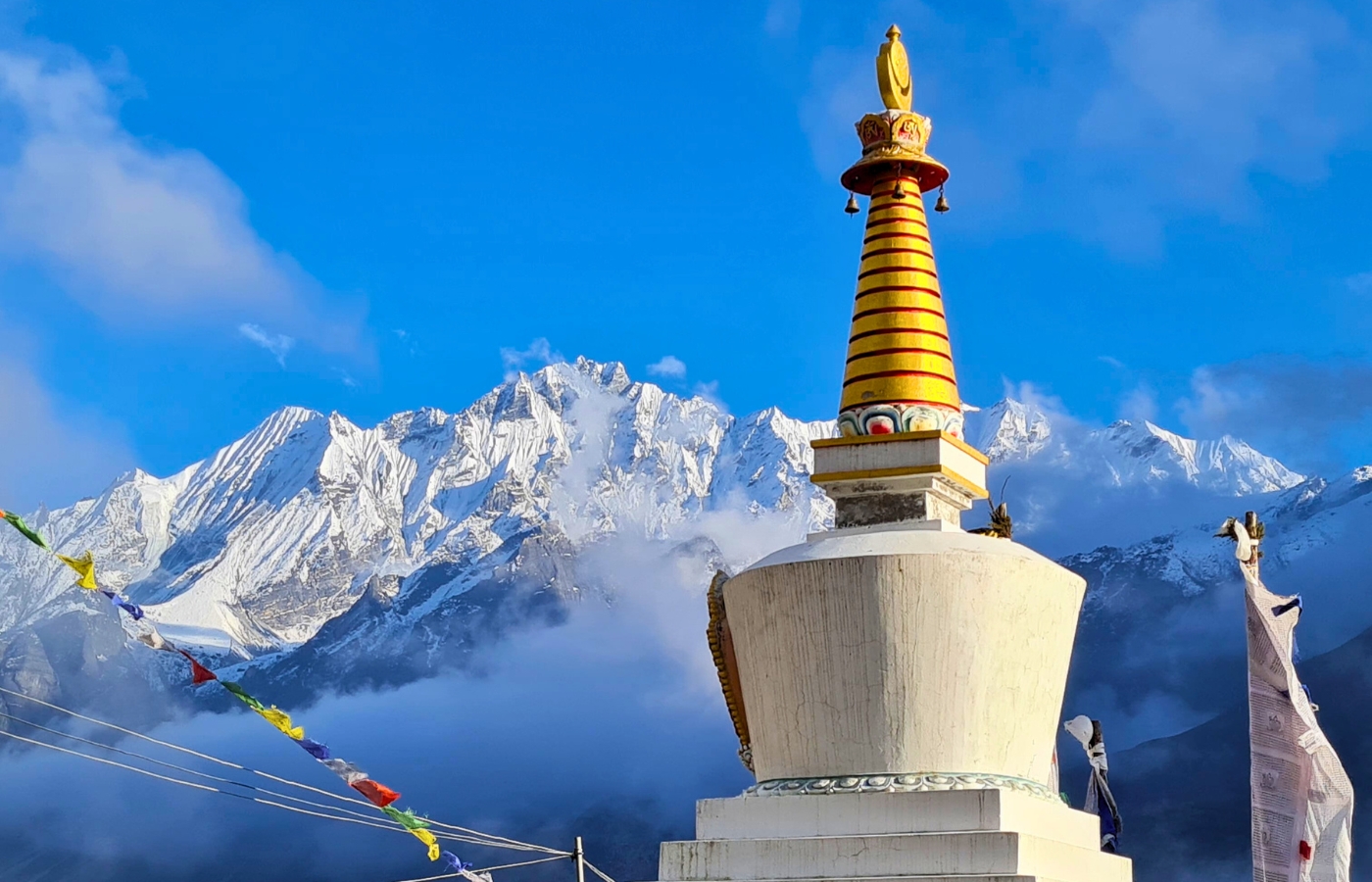
Langtang Region is the only trekking region located close to Kathmandu. This region is named after the Langtang Range, which stretches over the Nepal-Tibet border. Langtang Village, Kyangjin Gompa, Gosainkunda Lake, and the Tamang heritage villages of Briddhim, Gatlang, Thuman, and Syabrubesi are some of the popular tourist destinations in this region.
The homeland of the Tamangs, the Langtang Region, offers a peek into the rich Tibetan culture and customs of the Tamang people. Their culture is different from the Hindu majority of Nepal. Since they migrated from Tibet centuries ago, they have held fast to their traditional Tibetan customs, traditions, and language.
The Langtang Valley Trek takes you across the Langtang National Park to Kyangjin Gompa at the base of the Langtang Lirung. Gosainkunda Lake, a high-altitude lake that falls in this region, is a sacred pilgrimage site for Hindus and Buddhists. This lake is also popular among trekkers looking for a high-altitude adventure close to the capital city.
Dolpo Region
The region of Dolpo is characterized by Tibetan Buddhism, ancient Bon religion, high snow-covered passes, and a general remoteness from the rest of the country. Nestled deep beneath the Kanjirowa Himal and the Dhaulagiri Range, Dolpo is a land of great beauty and spiritualism. Divided into Lower Dolpo and Upper or Inner Dolpo, the region remains largely untouched by modern civilization. People over here follow Tibetan Buddhism and practice Bon rituals.
The crystal-clear Shey Phoksundo Lake is the major attraction of this region. The water of this lake feeds one of the highest waterfalls in Nepal. Trekkers walk for days to reach this enchanting lake. Close to the lake are ancient monasteries and villages that are hundreds of years old. The most popular trekking trail in this region connects Juphal with Shey Gompa, Phoksundo Lake, and Dho Tarap.
Muktinath
Location: Mustang District of Nepal, Height: 3,800 meters (12,467 feet), Highlight: Flames flicker beside icy springs—Muktinath is where devotion rises with the wind in the high Himalayan silence.
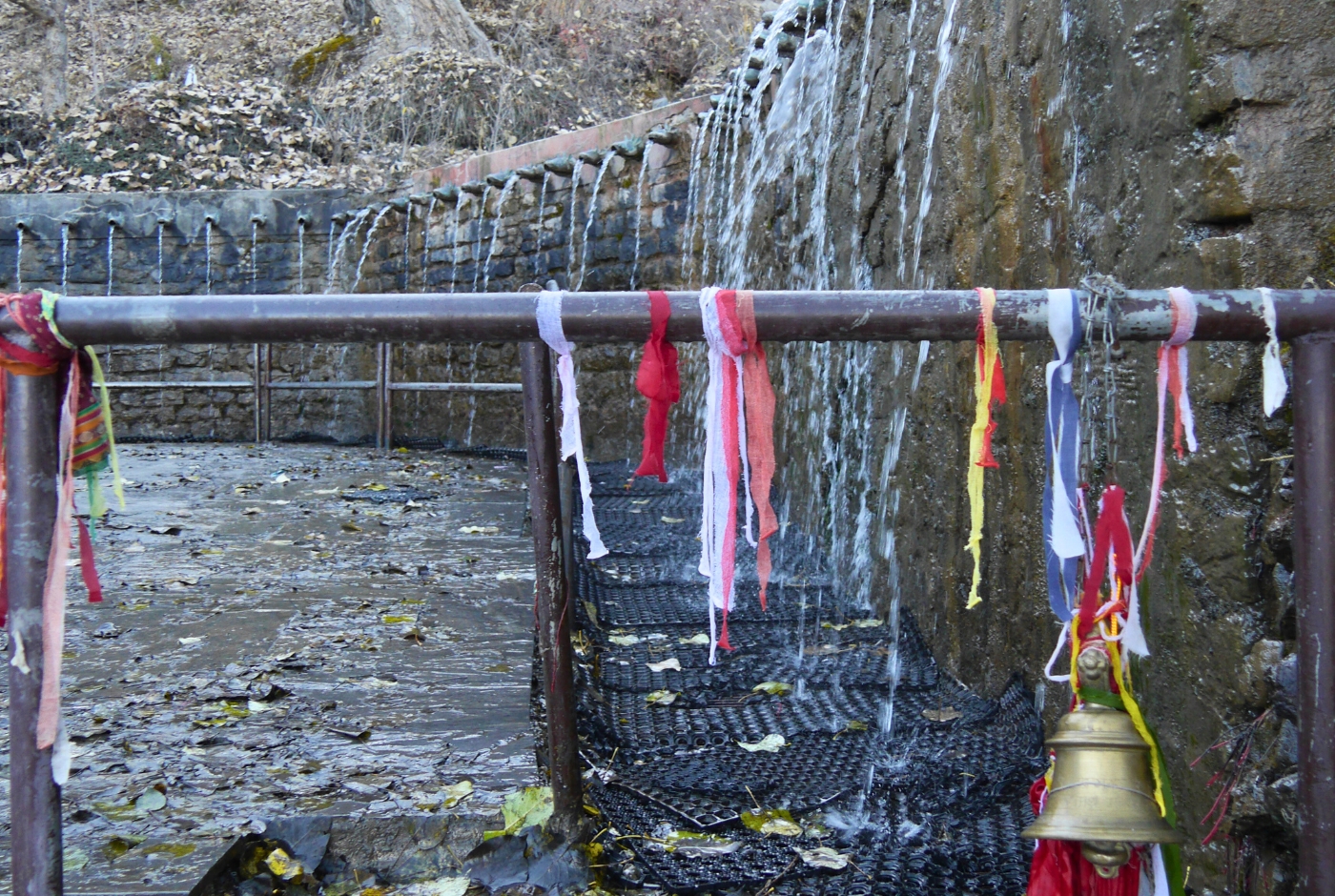
Muktinath is a sacred pilgrimage site located in the Kali Gandaki River valley at the foot of the Thorung La Pass. The Muktinath Temple, which is dedicated to Lord Vishnu (Avaloktishwara or Cehnrizeg for Buddhists), is the place where Hindus are believed to receive salvation, or 'moksha'. This is one of the oldest Hindu shrines in the world. Padmasambhava, or the Second Buddha, is said to have meditated here while on his way to Tibet. The Kali Gandaki River, which flows close to the temple, holds millions of 'saligrams,' or fossilized stones that Hindus believe represent Lord Vishnu.
Mustang
Location: Trans-Himalayan region of northwestern Nepal, bordering Tibet, Elevation: Varies from 2,800 to over 4,000 meters, Highlight: Journey through Mustang’s desert canyons, ancient cave monasteries, and windswept Tibetan villages where timeless traditions endure beneath the shadows of the high Himalayas
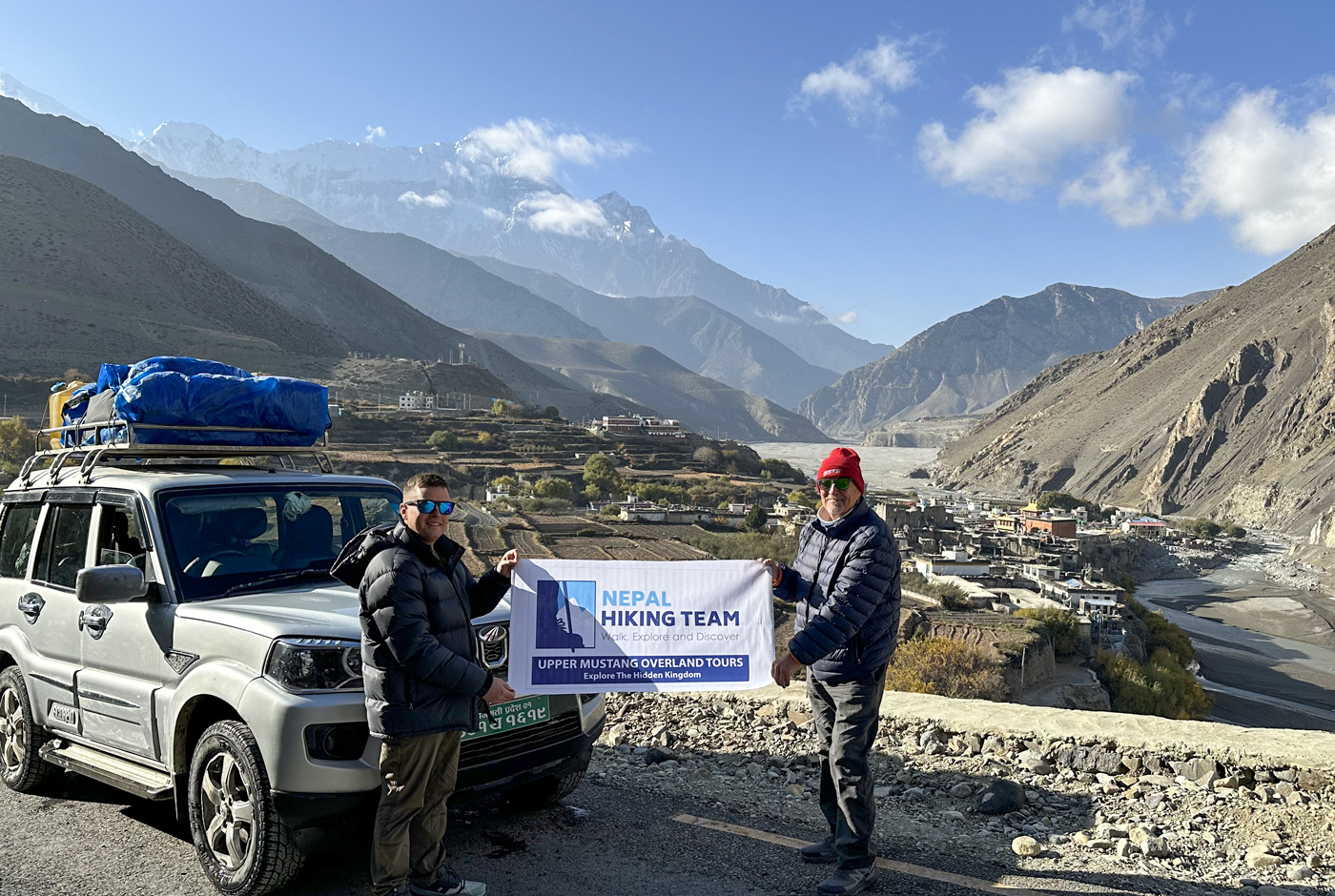
The American news channel CNN has listed Mustang as one of the best destinations to visit in Nepal. Lying isolated in the high Trans-Himalayan region, Mustang used to be an independent kingdom. It became a part of the kingdom of Nepal in the eighteenth century. Even though Mustang was annexed by the Gorkha King, he allowed the Raja of Mustang to rule over the Lo Manthang Kingdom.
Traveling to Mustang is like stepping into a different land and a different era. While Lower Mustang is home to the apple-farming Thakkalis, Upper Mustang is home to an ethnic group that has deep links with the Tibetans. The region lies close to the Tibetan plateau, and people here follow Tibetan Buddhist culture. The landscape is covered with red and brown hills and cliffs with ancient caves.
Archeological surveys conducted around this region have uncovered a series of ancient caves and artifacts. The Sky Caves, which are a series of 10,000 caves built on the side of a cliff, are a must-visit site in Mustang. The walled city of Lo Manthang is also a popular destination. The region is home to several ancient Buddhist monasteries, which are repositories of ancient Buddhist texts and paintings.
Manaslu Tsum Valley
Location: Gorkha district of western Nepal, northeast of Kathmandu, Height: Ranges from 700 meters to over 5,100 meters (Larkya La Pass), Highlight: Time slows in Tsum—monasteries cling to cliffs, and every footstep echoes ancient stories etched into the mountains.
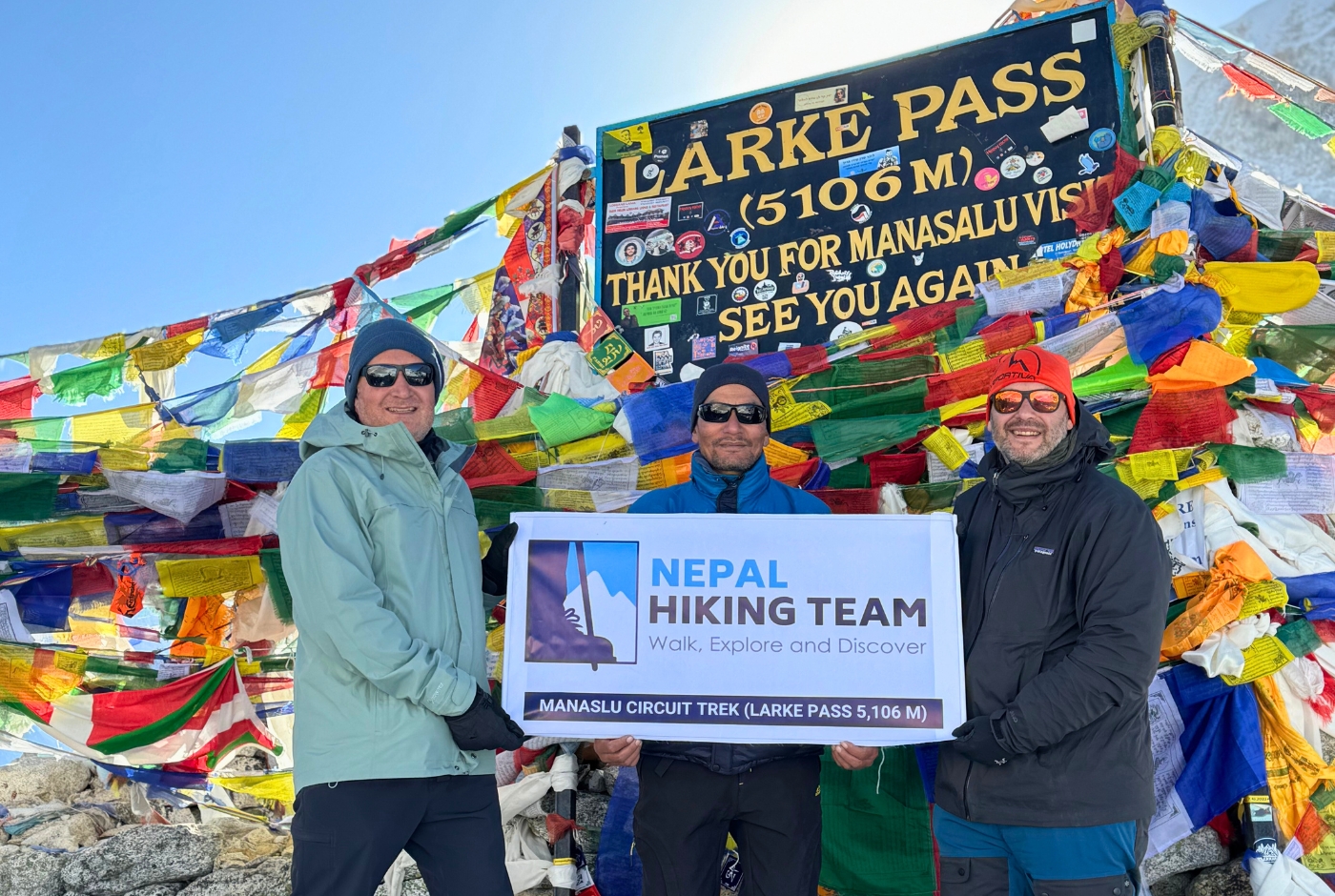
Tsum Valley remained isolated from the rest of the world until 2008. To preserve the fragile ecosystem and culture of this remote valley, the government of Nepal had banned entry into Tsum Valley. Even Nepalese were barred from entering the region. The valley was opened for tourism in 2008 to help boost the local economy. Now it's one of the best offbeat trekking destinations in Nepal.
Located in the Manaslu Region, close to Tibet, Tsum Valley is the land of the Tsumbas. With very little contact with the outside world, life in Tsum seems to be suspended in time. The people of Tsum have their own dialect and follow Tibetan Buddhism and the Bon religion. Killing or harming living beings (animals, birds, and insects) is strictly prohibited. Milarepa's Meditation Cave, Rachen Gompa, Mu Gompa, and the traditional villages of Upper and Lower Tsum are the main attractions of this region.
Rara Lake
Located within the Rara National Park, Rara Lake is the largest freshwater lake in Nepal. This jewel-like lake changes its color as the day progresses and the season changes. It is said that you can find all the colors of nature in the lake. From emerald blue to turquoise green and grey, from yellow to golden, the lake constantly changes its hue. During Baisakh, or the spring season, the lake is surrounded by flowering rhododendron shrubs, and the red and pink blooms throw their colorful reflections on the lake's water and make the lake appear blood red. In winter, the lake freezes and turns into a white field, while its banks are covered by fresh snow.
Rara Lake is surrounded by a dense forest of pine and juniper. One can hike around the lake or take a pony ride to explore the forest surrounding the lake. As it lies in the remote far-west region, not many tourists visit this lake. It remains calm and peaceful even during peak tourist season. If you want to go off-grid and explore a less touristy destination, then you should head to Rara Lake. Surrounded by pristine forests, Rara Lake is one of the best destinations for nature tours. The biggest city close to Rara is Nepalgunj. You can fly into either Nepalgunj Airport or Surkhet Airport and take a jeep ride to Rara Lake. You can also choose to trek to the lake from one of the villages en route.
Limi Valley
Limi Valley is one of the last unexplored bastions of Nepal. Located in Upper Humla, it is one of the few tourist destinations in Nepal untouched by commercialization. Limi Valley is also one of the few trekking trails in Nepal where there’s an absence of teahouses and old-style camping is necessary. So if you want an authentic and raw Himalayan trekking experience, you should choose Limi Valley.
The Limi Valley Trek takes you through ancient villages whose culture has been strongly influenced by Tibetan Buddhism,and isolated yak pastures, and alpine valleys dotted with mountain lakes. The trail traverses two high passes, Nara La and Nyayu La, and offers you a glimpse of the sacred Mount Kailash in Tibet. The walk through the fortified villages and nomadic settlements will transport you to a bygone era where life was simpler and less complicated. Limi Valley is an excellent destination if you want a raw Himalayan trekking experience.
Some of the Frequently Asked Questions about Nepal Tourist Attractions
Q1. How do I enter Nepal?
Ans: You can enter Nepal by air or by land. Nepal shares air connectivity with India, China, Bhutan, Sri Lanka, Thailand, Bangladesh, South Korea, Japan, Singapore, Malaysia, Qatar, Pakistan, the UAE, Oman, Turkey, Ethiopia, Kuwait, Bahrain, and Saudi Arabia. There are no direct flights to Nepal from North America, Australia, and Europe.
Nepal shares a land border with India and the Tibet Autonomous Region of China. You can enter Nepal from any of the land borders provided you have the right documents. Nepal offers visas on arrival for most foreign nationals, which can be obtained from the immigration check post at the airport or at the border.
Q2. How do I arrange my visa for Nepal?
Ans. It is super easy to get a tourist visa for Nepal. You can fly directly to the country and get it at the airport or at any of the immigration centers if you are entering the country by land. Except for the nationals of some strife-torn countries, Nepal offers visas on arrival to almost all tourists. You can fill out the visa form online at one of the kiosks, show your documents, and pay the required visa fee. You will be good to enter the country formally in no time at all. Find more information here:
https://www.immigration.gov.np/page/tourist-visa
Q3. How many international airports are there in Nepal?
Ans: There are three international airports in Nepal – Tribhuvan International Airport (Kathmandu), Pokhara Airport (Pokhara), and Gautam Buddha International Airport (Bhairahwa).
Q4. Is there Uber in Nepal?
Ans. No, there's no Uber service in Nepal. However, there are similar local ride-hailing applications (Pathao, Saadhan, Tootle, etc.) that you can use to book taxis or bikes in the major cities.
Q5. Is there road connectivity up to Everest Base Camp?
Ans: No. Since Everest Base Camp lies on steep and mountainous terrain, no road has been built in the Khumbu region. However, in the last couple of years, the government has made an effort to connect the villages lying in the lower Solu Khumbu region with a rough jeep track. As of now 2025, a rough track has been built till Thamdanda, which lies about 20 kilometers from Lukla.
Q6. Is Nepal safe for solo female travelers?
Ans. Nepal is one of the safest countries in the world for solo female travelers. Unlike in neighboring India, female travelers can expect a safe and hassle-free travel experience in Nepal. Nepalese people are generally respectful and helpful towards women travelers.
Q7. What are the languages spoken in Nepal?
Ans: Nepali is the national language and is used throughout the country. However, Nepal has more than a hundred different ethnic groups with their own dialects and customs. Most people living in large towns and cities have at least a basic knowledge of English. The people involved in the tourism and hospitality sectors have a good grasp of the English language as well as some foreign languages. It's possible to get tour or trekking guides who have excellent command over some of the major foreign languages other than English (Spanish, German, Mandarin, French, Korean, Japanese, Arabic, Italian, etc.).
Q8. When should I plan my travel to Nepal?
Ans: It depends on what you want to do in Nepal. If you want to tour only the cities and historical places, you can plan your travel any time of the year. However, if you have a climbing expedition in mind or want to go on a challenging high-altitude trek, then you should time your travel during the spring or autumn seasons. Spring and autumn offers the best weather conditions for mountain travel.
However as spring and autumn are the peak tourist seasons in Nepal the cost of almost everything (flight tickets, hotel rooms, transportation costs, etc.,) rises during these seasons. Off-seasons (summer and winter) are much quieter and less crowded, and you can expect discounts at most of the business establishments.
Q9. I am a senior citizen and want to experience the Himalayas without trekking or hiking. What are the options available?
Ans: There are mountain flights and helicopter tours available for those who want to experience the beauty of the Himalayan mountains in comfort. The Everest Mountain Flight, which operates from Kathmandu, flies you across the Everest Region and gives you an aerial tour of some of the world's tallest mountains.
Several private helicopter companies in Nepal offer helicopter charters and tours. The most popular destinations for heli tours are Everest Base Camp and Kala Patthar, Gokyo Lake, Gosainkunda Lake, Annapurna Base Camp, Langtang Valley, Tilicho Lake, and Muktinath.
You can also take a drive to Himalayan villages and lookout points like Ghandruk, Pikey Peak, Nagarkot, Dhulikhel, Daman, etc. to enjoy the panoramic views of the Himalayas. There are many spots in Pokhara (Sarangkot, Peace Stupa, etc.) from where you can enjoy terrific views of the Annapurna Range without exerting yourself physically.
Q10. What is 'teahouse trekking'?
Ans: Teahouses are small, family-run establishments on the mountain trails that offer food and accommodation to foreign tourists. These are usually family homes that are extended to accommodate small rooms and dormitories for tourists. Usually, it's pretty basic and bare—rooms with twin beds and tables, divided by thin plywood boards. Rooms come with attached or shared washrooms. When you use the services of teahouses (for meals and overnight stays) while trekking, it's called 'teahouse trekking'.
You can expect modern amenities on popular trails like the Everest and Annapurna trails. But if you are heading towards a more remote and isolated destination, you should be prepared to rough it out.
Q 11. How is internet connectivity in the mountains? Is there electricity available?
Ans: The Everest and Annapurna trails are quite developed. There is a Wi-Fi connection at almost all the teahouses on the trail. Villagers use solar power or electricity from the local hydroelectric stations to light up their houses and charge electronics. However, on the more remote trails like the Manaslu Circuit, Kanchenjunga Base Camp, Barun Valley, etc., the internet connections remain sketchy and almost nil.
Q12: Are credit card payments accepted in Nepal?
Ans: Most business establishments (hotels, departmental shops, restaurants, etc.) in the big cities accept card payments. In the mountains, vendors demand cash payments in local currency. To be on the safe side, it's better to withdraw cash in local currency from any of the ATM kiosks before starting your adventure. Most banks accept MasterCard, Visa, American Express, and UnionPay cards.
Q13. What kind of services can I expect from a travel agency if I book a trekking package with them?
Ans: Trekking agencies offer guide service, porter service, hotel accommodation in the city, and teahouse accommodation and meals while trekking. The agency also takes care of trekking permits and transportation (domestic flights and overland transfers). Most agencies are flexible regarding their services. For example, you can bring down the cost of your trip by opting to use only some of the services they offer.
Q 14. What happens if I get sick while trekking in a remote location?
Ans: If you are suffer from altitude sickness, you will need to descend to a lower elevation as soon as possible. If your condition worsens, you will have to call for an air ambulance. Since there are no roads in the mountains, you will be airlifted to a hospital in the city. In order to book the services of an air ambulance, you need to have travel insurance with high-altitude mountain rescue and evacuation coverage. Having a guide with you will be helpful. He will know what to do in adverse situations and make the right decisions for you.
Q 15. What are the accommodation options available in Nepal?
Ans: In Kathmandu and Pokhara, you will find high-end five-star hotels and resorts as well as budget hostels. There are several mid-range hotels that offer comfortable accommodations and decent amenities. In Chitwan and Bardiya, you will find jungle lodges, guesthouses, and resorts. In small towns like Bandipur and Tansen, you will find homestays and lodges. You can also rent furnished apartments or cottages on Airbnb in the cities.
While trekking, you can stay at teahouses, which are primarily family homes turned into guesthouses. Amenities are usually basic. You will get a room with two beds, mattresses, pillows, and blankets. The rooms may or may not come with attached bathrooms. The teahouses have large dining areas with stoves in the middle. At altitudes above 3000 meters, most teahouses won't have running water. You will have to pay extra to the teahouse owners for hot showers, wi-fi and to charge your electronic gadgets.
On the Everest and Annapurna trails, some private companies have set up luxury lodges – Yeti Mountain Homes, Everest Summit Lodges, and Ker and Downey Lodges. All these mountain lodges offer premium services in the harsh mountain terrain.
Other Notable Destinations in Nepal
- Tilicho Lake: One of the highest lakes in the world, offering breathtaking views of the surrounding mountains.
- Bhaktapur: A medieval "royal city" with well-preserved architecture and a vibrant cultural heritage.
- Gorkha: Explore the historical town, known as the birthplace of the Gorkha kingdom.
- Bandipur: Discover the largest cave in Nepal and explore the surrounding villages.
- Dhorpatan Hunting Reserve: Enjoy wildlife viewing and a taste of local cuisine.
- Parsa National Park: Enjoy wildlife safaris and explore the rich biodiversity of the area.
- Shivapuri Nagarjun National Park: Have a fantastic picnic and explore the natural beauty of the park.
- Shuklapanta National Park: Explore the jungles and enjoy the thrill of adventure.
- Saipal Base Camp: Experience the wild beauty of the western region.
- Kushma: Known as the Bungee and Zip-Flyer Capital, offering adventure activities.
- Bardiya National Park: Home to the Bengal Tiger and other wildlife.
- Dhulikhel: Experience the authentic Newari culture in this town.
- Bethanchowk: Enjoy the hill views and explore the area.
- Barun Valley: Discover the beauty of this floral valley.
- Badimalika-Tribeni Patan: Explore the region and experience the cultural heritage.
- Limi Valley: A unique valley with sculptures and mythological architecture, offering a glimpse into the rich cultural heritage of the region.
- Kuri Village: Located in the Kalinchowk district, Kuri Village is known for its natural beauty and is a popular spot for day trips.
Q 16. Which is the most visited place in Nepal?
The most visited place in Nepal is Pokhara, also known as the "tourist capital of Nepal". It's a popular destination for both adventure seekers and those looking to enjoy the scenery, featuring eight lakes, including Phewa and Begnas, and offering activities like paragliding and boating. Kathmandu is also a very popular destination, being the capital and a hub for religious and cultural tourism.
Q 17. Nepal's best known tourist attraction: Which is the most beautiful place in Nepal?
It's subjective, but Kathmandu Valley, with its historical sites and temples, and Pokhara, with its stunning mountain views and lakes, are often cited as some of the most beautiful places in Nepal. Lumbini, the birthplace of Lord Buddha, is also a significant and beautiful UNESCO World Heritage site. Nepal is widely known for its majestic Himalayan mountains, particularly Mount Everest.
While not as accessible as other places, Upper Mustang's barren, windswept landscape and the Tibetan culture are captivating. Rara Lake, Langtang National Park, and Shuklapanta National Park also offer unique beauty and adventure experiences.
Q 18. Unique places to visit in Nepal: What are the unique destinations in Nepal?
Nepal offers a diverse range of unique attractions beyond the popular Kathmandu and Pokhara. Consider visiting Tansen, with its historic palace, vibrant markets, and panoramic views; or exploring the remote Mustang region for a taste of Tibetan culture and stunning landscapes. You can also discover the beauty of the Solukhumbu district, home to the mighty Mount Everest, or the lush Chitwan National Park for wildlife encounters.
- Tansen: This charming town, known as the "Taj Mahal of Nepal" for its Rani Mahal palace, offers a glimpse into traditional Newari architecture, artisan shops, and local markets. Srinagar Hill provides panoramic views of the Himalayas and Terai plains, perfect for sunrise and sunset views.
- Mustang: Often referred to as the "Little Tibet," Mustang is a region known for its unique culture, stunning landscapes, and remote villages. Explore Jomsom and Lo Manthang, two important locations in Mustang, to experience this region's unique charm.
- Solukhumbu District: Home to the mighty Mount Everest and the vibrant Sherpa culture, Solukhumbu offers breathtaking landscapes and a chance to witness the grandeur of the Himalayas.
Q 19. How can I spend 3 days in Nepal?
In Kathmandu, a 3-day trip can focus on exploring the city's historical sites and cultural attractions. You can visit Durbar Squares, temples, and stupas, or take a day trip to a nearby location like Nagarkot or Bhaktapur. Alternatively, you could choose a short trek like Ghorepani Poon Hill or a wildlife experience in Chitwan National Park.
Q 20. Places to visit in Nepal for couples: What are the best places for couples in Nepal?
For couples seeking natural beauty and romantic experiences, Nepal offers numerous destinations, with Kathmandu Valley, Bandipur, Gorkha, Ghandruk, Pokhara, Nagarkot, and Chitwan National Park being particularly popular. Other great options include Sarangkot, the Annapurna region, and the Everest Base Camp trek.
Conclusion ;
Nepal is regarded as a 'beyul' by Tibetan Buddhists. 'Beyul' stands for a hidden paradise and sacred land covered by mountains that offer refuge. This is indeed a precise description of this beautiful country. This tiny mountain nation offers you a unique travel experience like no other destination. Blessed with amazing natural beauty, Nepal brings you as close to the wonders of Mother Nature as you can possibly get. The raw nature and the grand mountains are sure to touch your core and bring out the best in you. Be it thrilling outdoor adventures, soulful spiritual journeys, or immersive cultural tours, Nepal is sure to satiate your appetite for travel.



